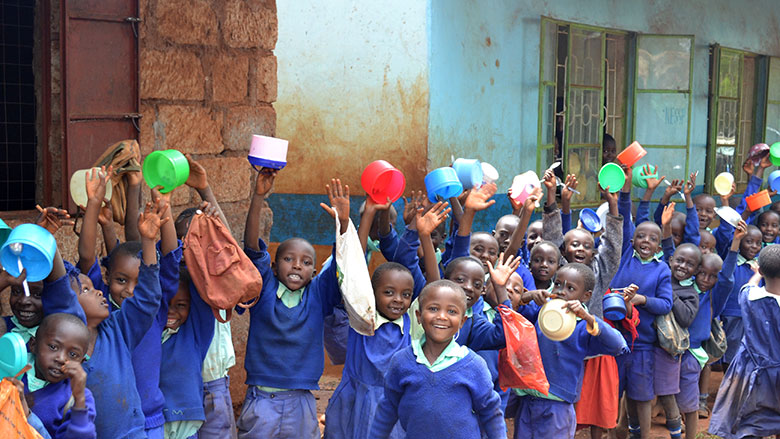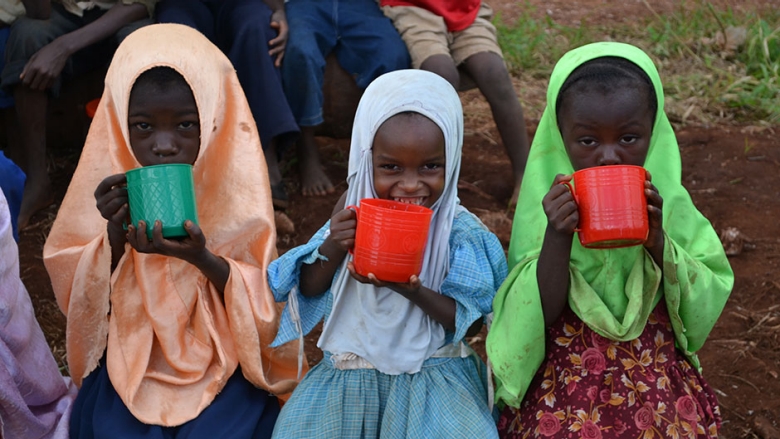The Global School Feeding Sourcebook: Lessons from 14 Countries examines the 14 national programmes in terms of Five Quality Standards as identified in Rethinking School Feeding (WB, 2009) that are needed for school feeding programmes to be sustainable and effective. These standards include: design and implementation; policy and legal frameworks; institutional arrangements; funding and budgeting; and community participation.
Design and implementation
School feeding is most frequently designed as a social protection measure for poor and vulnerable communities with the key outcome being an improvement in education through increased enrolment, reduced absenteeism, and enhanced gender equality. For example primary school enrolment in Nigeria’s Osun State increased by 28percent since the introduction of free school meals. Increasingly, policy makers are seeing school feeding as a means to tackle health and nutrition issues whether that be stunting and anaemia caused by undernutrition or obesity caused by over nutrition. In Ghana, the government uses a digital school meals planner to develop nutritionally balanced school meals using local ingredients.
Another trend is for countries to connect school feeding with local food production and purchase, also known as Home Grown School Feeding. This benefits both rural economies and school children alike as children benefit from nutritious fresh food and farmers benefit from being able to sell their produce a new market. In Brazil, for example, it is federal law that 30percent of food for school meals is procured from small family-run farms.
Policy and legal frameworks
Effective programmes need well-articulated policy and legal frameworks. Every country reviewed in the study has included school feeding in its regulatory framework. This has been achieved using different types of legislative and executive measures dependent on the national context.
Institutional arrangements
There is no single institutional design, but the key determinants of success include co-ordinating stakeholders from across multiple sectors; ensuring that there is enough government capacity at national and local levels; and creating mechanisms to ensure quality and accountability of the school feeding programmes. The cross-sectoral aspect of school feeding is exemplified by Kenya, where its programmes are coordinated jointly by the Ministry of Education and the Ministry of Agriculture.
Funding and budgeting
School feeding costs usually represent a small fraction of educational expenditure (typically 10-15 percent) with the purchase of food being the main cost-driver. Identifying sustainable and protected sources of funding remains the key challenge for many low-income countries. Analysis shows that there is strong political will to continue to fund school feeding as it is a popular intervention with the public, but not all funding is public, and private sector partnerships are a growing area of financial support. In Cape Verde schools can partner with local businesses such as hotels for extra funds which can be put towards cooking facilities.
Community participation
The strongest and most sustainable programmes are those that respond to community need, are locally-owned and incorporate some form of parental or community contribution. In Namibia, many communities are expected to provide fuel, cooking utensils and storerooms. Indirect benefits of school feeding include employment opportunities for example, in Chile, low-income mothers are given catering training. School feeding can also mean increased income and training for smallholder farmers; as well as complementary school health activities, as in both Mexico and Brazil where parents are taught about the importance of nutritionally balanced diets.

